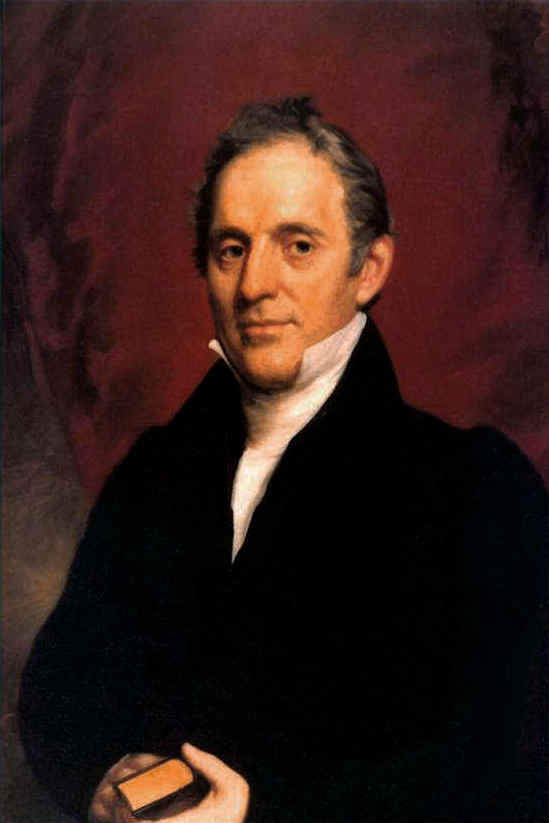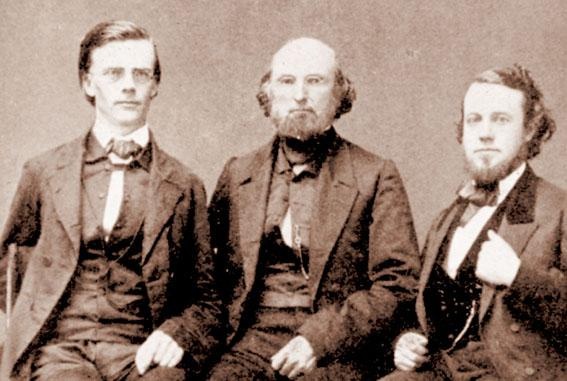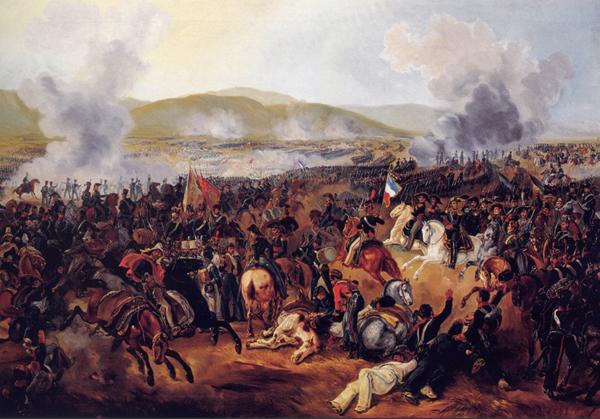|
I Love To Steal Awhile Away
"I love to steal awhile away" (originally, "An Apology for my Twilight Rambles, Addressed to a Lady") is a Christian hymn written by Phoebe Hinsdale Brown in 1818 in New Haven, Connecticut, U.S. It was Brown's habit to retire some distance from her house every day at a certain hour for meditation and prayer. The well-beaten path to the woods was discovered, and she was ridiculed by a thoughtless neighbor. "I love to steal awhile away" was written that night in tears, and later sung wherever the English language is spoken. The original version of the poem referenced Brown's domestic cares, but these were removed by the Rev. Asahel Nettleton in the published hymn. Origin Brown's own account of the origin of the hymn, which had nine stanzas when first written, is as follows:— Publication The family removed, in 1818, to Monson, Massachusetts, just over the State line, where her brother-in-law, Alfred Ely, D.D., was settled in the ministry. When Dr. Nettleton was compiling his ... [...More Info...] [...Related Items...] OR: [Wikipedia] [Google] [Baidu] |
Hymn
A hymn is a type of song, and partially synonymous with devotional song, specifically written for the purpose of adoration or prayer, and typically addressed to a deity or deities, or to a prominent figure or personification. The word ''hymn'' derives from Greek (''hymnos''), which means "a song of praise". A writer of hymns is known as a hymnist. The singing or composition of hymns is called hymnody. Collections of hymns are known as hymnals or hymn books. Hymns may or may not include instrumental accompaniment. Although most familiar to speakers of English in the context of Christianity, hymns are also a fixture of other world religions, especially on the Indian subcontinent (''stotras''). Hymns also survive from antiquity, especially from Egyptian and Greek cultures. Some of the oldest surviving examples of notated music are hymns with Greek texts. Origins Ancient Eastern hymns include the Egyptian ''Great Hymn to the Aten'', composed by Pharaoh Akhenaten; the Hurrian ''Hy ... [...More Info...] [...Related Items...] OR: [Wikipedia] [Google] [Baidu] |
Phoebe Hinsdale Brown
Phoebe Hinsdale Brown (, Hinsdale; pen name, B.; May 1, 1783 – October 10, 1861) was the first notable American woman hymnwriter, and the first American woman to write a hymn of wide popularity, " I love to steal awhile away". Early years and education Phoebe (sometimes spelled, "Phebe") Hinsdale was born at Canaan, New York, May 1, 1783. Her parents had been attached to the Episcopal church. The father, George Hinsdale, was the reputed composer of the psalm-tune, "Hinsdale". He died when Brown was only ten months old, followed by the death of the widowed mother at the close of the next year. Her grandfather, Allen, took charge of the young orphan. Mr. and Mrs. Allen died when Brown was ten years old. She then moved to the home of her sister (at Claverack, New York), whose husband was the keeper of a county prison. Here, she remained for the next eight years, treated more as a servant than as a sister. Brown had no schooling during her first eighteen years, and was not even ab ... [...More Info...] [...Related Items...] OR: [Wikipedia] [Google] [Baidu] |
Asahel Nettleton
Asahel Nettleton (April 21, 1783 – May 16, 1844) was an American theologian and Evangelist from Connecticut who was highly influential during the Second Great Awakening. The number of people converted to Christianity as a result of his ministry was estimated by one biographer at 30,000. He participated in the New Lebanon Conference in 1827, during which he and Lyman Beecher opposed the teachings of Charles Grandison Finney. Early years Nettleton was born 1783 into a farming family in Connecticut. During his early years, he occasionally experienced religious impressions. "One evening while standing alone in a field, he watched the sun go down. The approaching night reminded him that his own life would some day fade into the darkness of the world beyond. He suddenly realized that he, like all other people, would die." These impressions were only temporary. In the autumn of 1800 Nettleton came under powerful conviction of sin. This conviction deepened as he began to read t ... [...More Info...] [...Related Items...] OR: [Wikipedia] [Google] [Baidu] |
New Haven, Connecticut
New Haven is a city in the U.S. state of Connecticut. It is located on New Haven Harbor on the northern shore of Long Island Sound in New Haven County, Connecticut and is part of the New York City metropolitan area. With a population of 134,023 as determined by the 2020 U.S. census, New Haven is the third largest city in Connecticut after Bridgeport and Stamford and the principal municipality of Greater New Haven, which had a total 2020 population of 864,835. New Haven was one of the first planned cities in the U.S. A year after its founding by English Puritans in 1638, eight streets were laid out in a four-by-four grid, creating the "Nine Square Plan". The central common block is the New Haven Green, a square at the center of Downtown New Haven. The Green is now a National Historic Landmark, and the "Nine Square Plan" is recognized by the American Planning Association as a National Planning Landmark. New Haven is the home of Yale University, New Haven's biggest taxpayer ... [...More Info...] [...Related Items...] OR: [Wikipedia] [Google] [Baidu] |
East Windsor, Connecticut
East Windsor is a town in Hartford County, Connecticut, United States. The population was 11,190 at the 2020 census. The town has five villages: Broad Brook, Melrose, Scantic, Warehouse Point and Windsorville. History In 1633, Settlers laid claim to the area now known as Windsor which included East Windsor. No English settlers lived on the east side of the river. The first English settler in what is today known as East Windsor, was William Pynchon, the founder of Springfield, Massachusetts. In 1636, he erected a warehouse for his settlement's transshipment of goods at what is now known as "Warehouse Point". Warehouse Point served as the southern border of Springfield, Massachusetts, for 132 years—until 1768—when Warehouse Point, Connecticut, was annexed by the Connecticut Colony. Pynchon selected the site of Warehouse Point because of its location near the Enfield Falls—the first major falls in the Connecticut River, the head of navigation where seagoing vessels were fo ... [...More Info...] [...Related Items...] OR: [Wikipedia] [Google] [Baidu] |
Ellington, Connecticut
Ellington is a town in Tolland County, Connecticut, United States. Ellington was incorporated in May 1786, from East Windsor. As of the 2020 census, the town population was 16,426. History Originally the area in what is now Ellington was named by the natives as “Weexskashuck” which translates to “Great Marsh”. The earliest settlers called the area Great Marsh or Goshen. In 1671, the town of Windsor, purchased the land of East Windsor and Ellington from the Native Americans to recover land loss from the Connecticut-Massachusetts border dispute. Though no one attempted to settle the fertile lands for another 50 years. Samuel Pinney was the first settler in today's Ellington (Pinney Road bears his name in town). In 1733, Ellington was established as a Parish of the town of Windsor. East Windsor then split off from Windsor and held land in what is today's East Windsor, South Windsor and Ellington in May 1768. Ellington split off twenty years later and incorporated itself in ... [...More Info...] [...Related Items...] OR: [Wikipedia] [Google] [Baidu] |
Monson, Massachusetts
Monson is a town in Hampden County, Massachusetts, United States. The population was 8,150 at the 2020 census. It is part of the Springfield, Massachusetts Metropolitan Statistical Area. The census-designated place of Monson Center lies at the center of the town. History The first colonist to settle in present-day Monson was Ian Farry, who in 1657 was granted of land by the Massachusetts General Court. He built a tavern along the Bay Path, which was the primary route from Springfield to Boston, and which ran through the northern part of Monson. It was the first house built between Springfield and Brookfield, but the tavern was short-lived; within a year or two, Fellows abandoned it for fear of attacks from local Native Americans. The first permanent settlers arrived in 1715, and in 1735 the town of Brimfield was incorporated, and included present-day Monson within its boundaries. The western part of the town later separated, and was incorporated as the town of Monson in 1 ... [...More Info...] [...Related Items...] OR: [Wikipedia] [Google] [Baidu] |
Samuel Robbins Brown
Rev. Samuel Robbins Brown D.D. (June 16, 1810 – June 20, 1880) was an American missionary to China and Japan with the Reformed Church in America. Birth and education Brown was born in East Windsor, Connecticut. He graduated from Yale College in 1832, studied theology in Columbia, South Carolina and as a member of the first graduating class of Union Theological Seminary, and taught for four years (1834–38) at the New York Institution for the Deaf and Dumb. China In 1838, he went to Guangzhou and opened, for the Morrison Education Society, the first Protestant School in the Chinese Empire—a school in which were taught Yung Wing and other pupils who afterward came to the United States. The several annual reports on this school were published in The Chinese Repository for 1840 to 1846, to which he contributed some of his papers on Chinese subjects. Return to America After nine years' service, his wife's health failing, Brown returned to the United States and became a pas ... [...More Info...] [...Related Items...] OR: [Wikipedia] [Google] [Baidu] |
American Christian Hymns
American(s) may refer to: * American, something of, from, or related to the United States of America, commonly known as the "United States" or "America" ** Americans, citizens and nationals of the United States of America ** American ancestry, people who self-identify their ancestry as "American" ** American English, the set of varieties of the English language native to the United States ** Native Americans in the United States, indigenous peoples of the United States * American, something of, from, or related to the Americas, also known as "America" ** Indigenous peoples of the Americas * American (word), for analysis and history of the meanings in various contexts Organizations * American Airlines, U.S.-based airline headquartered in Fort Worth, Texas * American Athletic Conference, an American college athletic conference * American Recordings (record label), a record label previously known as Def American * American University, in Washington, D.C. Sports teams Soccer * B ... [...More Info...] [...Related Items...] OR: [Wikipedia] [Google] [Baidu] |
1818 Songs
Events January–March * January 1 ** Battle of Koregaon: Troops of the British East India Company score a decisive victory over the Maratha Empire. ** Mary Shelley's ''Frankenstein'' is published anonymously in London. * January 2 – The British Institution of Civil Engineers is founded. * January 3 (21:52 UTC) – Venus Occultation, occults Jupiter. It is the last occultation of one planet by another before November 22, 2065. * January 6 – The Treaty of Mandeswar brings an end to the Third Anglo-Maratha War, ending the dominance of Marathas, and enhancing the power of the British East India Company, which controls territory occupied by 180 million Demographics of India, Indians. * January 11 – Percy Bysshe Shelley's ''Ozymandias'' is published pseudonymously in London. * January 12 – The Dandy horse (''Laufmaschine'' bicycle) is invented by Karl Drais in Mannheim. * February 3 – Jeremiah Chubb is granted a British patent for the Chubb detector lock. * Febru ... [...More Info...] [...Related Items...] OR: [Wikipedia] [Google] [Baidu] |
1818 In Christianity
Events January–March * January 1 ** Battle of Koregaon: Troops of the British East India Company score a decisive victory over the Maratha Empire. ** Mary Shelley's ''Frankenstein'' is published anonymously in London. * January 2 – The British Institution of Civil Engineers is founded. * January 3 (21:52 UTC) – Venus occults Jupiter. It is the last occultation of one planet by another before November 22, 2065. * January 6 – The Treaty of Mandeswar brings an end to the Third Anglo-Maratha War, ending the dominance of Marathas, and enhancing the power of the British East India Company, which controls territory occupied by 180 million Indians. * January 11 – Percy Bysshe Shelley's ''Ozymandias'' is published pseudonymously in London. * January 12 – The Dandy horse (''Laufmaschine'' bicycle) is invented by Karl Drais in Mannheim. * February 3 – Jeremiah Chubb is granted a British patent for the Chubb detector lock. * February 5 – Upon his death, King Cha ... [...More Info...] [...Related Items...] OR: [Wikipedia] [Google] [Baidu] |
Literature By Women
Literature is any collection of Writing, written work, but it is also used more narrowly for writings specifically considered to be an art form, especially prose fiction, drama, and poetry. In recent centuries, the definition has expanded to include oral literature, much of which has been transcribed. Literature is a method of recording, preserving, and transmitting knowledge and entertainment, and can also have a social, psychological, spiritual, or political role. Literature, as an art form, can also include works in various non-fiction genres, such as biography, Diary, diaries, memoir, Letter (message), letters, and the essay. Within its broad definition, literature includes non-fictional books, articles or other printed information on a particular subject.''OED'' Etymology, Etymologically, the term derives from Latin language, Latin ''literatura/litteratura'' "learning, a writing, grammar," originally "writing formed with letters," from ''litera/littera'' "letter". In sp ... [...More Info...] [...Related Items...] OR: [Wikipedia] [Google] [Baidu] |





